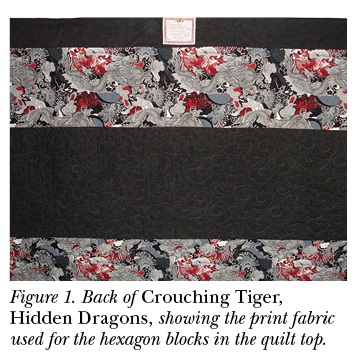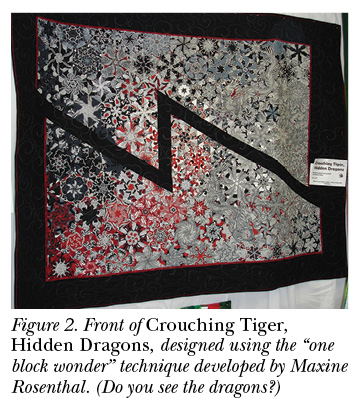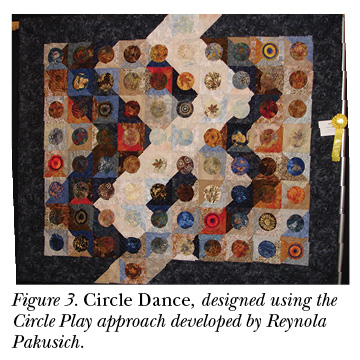By Andrea L. Ames | STC Fellow
 Technical communication is a gorgeous tension between creativity and structure, and so, for me, is making quilts. I love the interplay of color and shape and how a print, when cut up and sewed back together, can look completely different. I think of it as painting with fabric.
Technical communication is a gorgeous tension between creativity and structure, and so, for me, is making quilts. I love the interplay of color and shape and how a print, when cut up and sewed back together, can look completely different. I think of it as painting with fabric.
You might think quilts are just blankets—something to keep you warm at night or while you watch TV in the winter. Or you might think of their historical uses—informing conductors on the Underground Railroad or communicating something about the times in which they were made through the blocks and patterns and fabrics included.

But for a quilt maker, quilts are so much more—and more like technical communication than you might think.
Take single sourcing, for example: One fabric—the black, white, red, and gray print in figure 1—produced all of the Crouching Tiger, Hidden Dragons hexagon blocks in figure 2. (Can you find the hidden dragons?)
Consider structure and architecture: Visually communicating the Circle Dance intertwined paths and light and shadow in figure 3 required a specific, structured approach, just as creating the solid, three-dimensional cubes in Forest Sparkle, shown in figure 4, required a two-dimensional architecture.

Quilters can show our work, have it judged, and win accolades, as you can see by the third-place ribbons from a Maine quilt show on Circle Dance (figure 3) and Forest Sparkle (figure 4), which also won second place in a California show.
We need the right tools for the job—for the actual quilting (stitching together the top, back, and a layer of batting between them), the longarm quilting machine shown in figure 5. And we work in teams, called “bees,” like the participants in the local quilt guild, which is our version of STC, where we obtain much of our professional development.

In the end, as with technical communication, after we’ve applied all of our creativity, hoping to inform and delight our viewers, quilts are most often put to practical use. Whether lying under them for warmth or sitting on top of them like a cushion, we want our users to derive success from our quilts, whatever “success” means for those users: Warmth, comfort, a historical or family legacy, or perhaps just a little joy.

Andrea Ames (andrea@idyllpoint.com) has been designing and making quilts and patterns, teaching quilt design and various quilt-making techniques, quilting quilts, and collecting fabric for 30 years. She loves to simplify and teach patterns and techniques that seem complex so that any quilter can achieve wild success with their work of art. You can see more of her quilts in her “Andrea’s Quilts” public photo album on Facebook: https://www.facebook.com/alames/photos_albums.
REFERENCES
Vision 2.0 Hand-Guided Quilting System. Gammill Longarm Quilting Machines website. https://gammill.com/vision-2/.
Pakusich, Reynola. Circle Play: Simple Designs for Fabulous Fabrics. C&T Publishing, 2004.
Rosenthal, Maxine. One-Block Wonders: One Fabric, One Shape, One-of-a-Kind Quilts. C&T Publishing, 2006.


